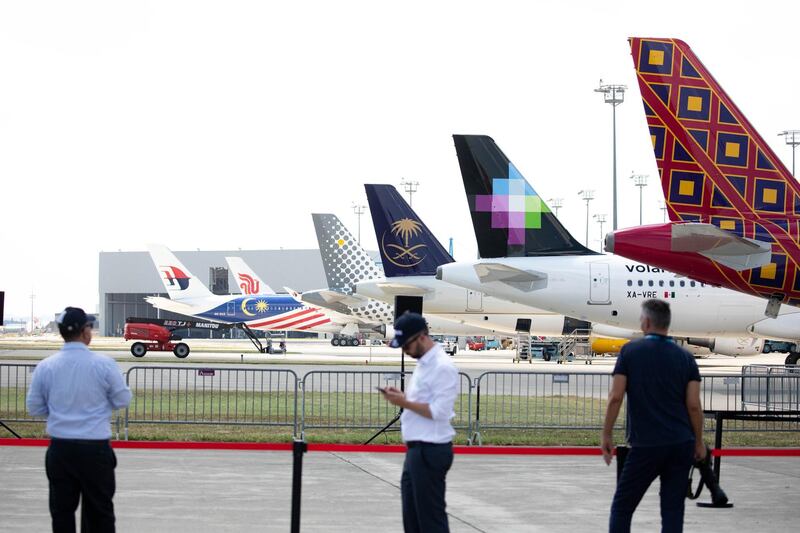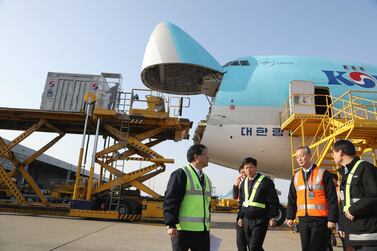Demand among airline passengers in the Middle East grew faster in October than in any other market, new figures from the International Air Transport Association show.
Global passenger demand increased 3.4 per cent year-on-year in October, but remained weaker than the industry’s long-term growth trend, as trade headwinds and a global economic slowdown weighed on travel demand in most regions, Iata said. In September, passenger demand growth was 3.9 per cent, the global aviation trade body said on Thursday. Global passenger capacity — available seat kilometres, or ASK — rose 2.2 per cent on an annual basis, while load factor, a measure of capacity utilisation by global airlines, climbed 0.9 percentage points to 82 per cent - a record for October.
“Traffic growth continues to be depressed compared to historical long-term growth levels, reflecting continued moderating economic activity in some key markets and sagging business confidence,” said Alexandre de Juniac, Iata’s director general and chief executive.
“However, the fact that traffic is growing is a positive, and the industry continues to do an excellent job of maximising asset efficiency, as shown in the record load factor.”
In the Middle East, passenger traffic increased 5.9 per cent in October, a sharp increase over the 1.8 per cent growth seen in September and throughout the rest of the year. Capacity was up 0.3 per cent, and load factor surged 3.9 percentage points to 73.5 per cent.
Asia-Pacific carriers saw a 3.8 per cent rise in October traffic, compared to the same period last year, a bit below the 4 per cent annual growth recorded in September and well down on 2018 growth largely owing to weaker business confidence in a number of key markets, the impact of the US-China trade war and the recent disruptions in Hong Kong.
European airlines registered a 2.1 per cent rise in October demand, down from 3.2 per cent growth in September. “On a seasonally-adjusted basis traffic is showing a moderate upward trend despite generally soft economic activity in some of the key markets,” Iata said.
African airlines’ traffic climbed 1.8 per cent in October, the same as in September, with the economic slowdown in South Africa weighing on recent moderation in demand growth.
North American carriers had the second-highest international demand in October, with traffic up 4.1 per cent compared to the same month a year ago and largely in-line with a 4.3 per cent annual increase in September, Iata said citing “solid US economy and robust consumer spending” for the higher demand.
In Latin America, demand dropped 0.6 per cent in October compared to the same month last year.
In domestic passenger markets, demand climbed 3.6 per cent in October year-on-year, down from 5.1 per cent annual growth recorded in September owing to softer performance in the US and China, the largest domestic markets, Iata said.







